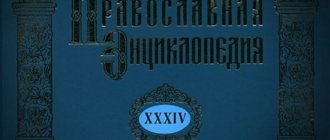Patriarchal family - what is it, when did it appear, differences from the partner family, types
The relationship between a man and a woman, parents and children depends not only on their desires and attitudes, but also on social norms. For a long time, the patriarchal family was the only way to organize everyday life. Based on the primacy of men, it helped to survive and continue the family line.
When did the patriarchal family appear?
In Rus', traditional relationships between husband and wife became widespread with the advent of Christianity. The patriarchal structure of the family was largely determined by religious norms and the function of the man as the main breadwinner. For many centuries, this form of relationship was the only way to organize everyday life. Nowadays, the patriarchal family is widespread mainly in countries with a traditional economic structure, where physical labor predominates.
The modern family has a pronounced tendency towards divorce
As psychologists say, dysfunctional families arise (there is a family, but not everything is smooth in it) with continued female hyperfunctioning. The man in them is localized or “made a tail.” I must say that these are not 100% statistics, but already in the second generation we are seeing a significant number of divorces.
In the next generation, the marriage also turns out to be unsuccessful: somewhere they got divorced, somewhere some problems arose. The number of third generation divorces is growing exponentially. A model is emerging: it is easier not to overcome family difficulties, but to get a divorce and create a new marriage. This is how there is a tendency to divorce, just as there is a tendency to lung diseases and allergies.
There is another important phenomenon described by family psychologists: anniversary syndrome. This is a condition that occurs at the level of repetition of unconscious patterns of behavior in the family, as a tendency to copy the behavior of parents at a certain age of their child.
What do we see here? For example, the parents divorced when the child was five years old. He doesn't remember this, because at five years old most people don't yet have coherent memories. And so the son grew up, got married, difficulties arise in the marriage, and now his own child is turning five years old, and he himself has an irresistible desire to destroy the relationship. This is the anniversary.
I believe that the modern family has a strong tendency towards divorce, as well as a tendency to repeat parental patterns. Marriage is difficult and it is a meltdown, and not at all what people imagine in fairy tales: mead, beer and absolute happiness. The family today turns out to be unprepared for the difficulties of marriage and its trials, and not ready hereditarily, for two or three generations.
Signs of a patriarchal family
The main distinguishing characteristics are:
- Patrilineality. The transfer of all property, ranks, and titles occurs only through the male line.
- Absolute power and responsibility of the father. The head of a patriarchal family not only manages all property, but is also responsible for the life and health of his wife, children and other relatives.
- Having many children. Features of a patriarchal family necessarily include the presence of spouses with more than one child. A woman devotes herself entirely to giving birth and raising children. Patriarchy in the family contributes to the fact that the child becomes independent early and is accustomed to domestic work.
- Another sign is the living of several generations of people under one roof. Moreover, the father is the head of the family and the oldest man in the family.
- The wife, children and other younger members of the family must unquestioningly obey the head and fulfill all his demands. The authority of an older man is not discussed and is accepted unconditionally.
- A patriarchal family is characterized by religiosity and strict adherence to the canons.
- The head of the family must fully provide all members with food, clothing and other necessary goods.
- All property belongs to the man. A woman cannot have ownership rights to a house or land.
Gender equality
We seem to have sorted out patriarchy and matriarchy, let’s talk about equality.
Equality at its core implies equal rights, opportunities and responsibilities for women and men. At first glance, everything is fine, everyone is equal, everyone is happy. But is it really that simple?
Is it so good when the natural essences of the sexes are erased:
- A man is a breadwinner, a protector,
- A woman is a gentle, affectionate keeper of the hearth.
And doesn’t equality lead to artificial “genderlessness”: when women are insufficient in feminine strength, and men are insufficient in masculine strength? In H.G. Wells's novel The Time Machine, a time traveler finds himself in the world of the future and sees that "scientific and technological progress" (materialism) on Earth has led to the fact that asexual humanity has reached a state of "absolute peace", that is, balance ("complete harmony") as stagnation and extinction.
After all, with equality: relationships between a man and a woman are built not on the principle of complementarity, but on the principle of interchangeability. Is such equality necessary?
I do not undertake to criticize any of the types of family building:
- In patriarchy, a man dominates and supports his wife, keeping her in a tight grip;
- In matriarchy, a woman does what she wants, has children from whomever she wants, but also raises them herself, without support, and no one is obliged to feed her;
- If we are talking about equality, then investments are required from both, and there is no way without mutual respect.
The main thing is that the views of a woman and a man on building relationships coincide. After all, we are all different: some like to command, others to obey, one is used to being strong, the other is weak by nature. Everyone has their own choice: what type of relationship to build, and there is no right or wrong here. The main thing is that it suits both.
Which of these three systems: matriarchy, patriarchy, equality – seems more attractive to you, dear readers? I invite you to share your opinion in the comments.
Thank you for attention.
Information from sources used:
https://vedavrat.org/tantra-jyotish/11118/matriarchy-and-patriarchate-matriarhat-patriarhat-analiz
https://www.culture.ru/materials/254777/domostroi-normy-semeinoi-zhizni-na-rusi
You may be interested in the publication:
“Mom said I was a girl”: or parents’ argument about what gender their child is
Patriarchal family - pros and cons
The traditional way of life has several advantages over other types of relationships:
- Stability and security
. The head of a patriarchal family not only decides all issues, but is also responsible for the health and condition of his wife and children. - Clear division of responsibilities
. Each member of a patriarchal family has his own area of responsibility. - Family resilience
. The patriarchal structure is characterized by long-term relationships without divorce. - Caring for children and the elderly
. In a patriarchal family, the role of the older generation, which enjoys respect and privileges, is very important.
For a long time, the patriarchal family was the only way to survive in difficult conditions. This way of life has significant disadvantages that make it almost irrelevant at the present time:
- Addiction
. All family members must obey the decisions of the older man. The wife and children do not have the right to independently manage property and finances, choose their field of activity and ways of spending their leisure time. - Difficulties with self-realization
. Since all decisions are made by the head of the family, the wife and children have no opportunity to choose their education, career and occupation to their liking. - Conflict of generations
. In a patriarchal family, there is often a discrepancy between the desires of the father and the children.
Matriarchy
Matriarchy is a form of social structure in which family power belongs to women. According to most scientists, ethnology, archeology and anthropology have not provided real evidence of the existence of women’s power over men.
Arguments in favor of the existence of matriarchy are based on the following points: ancient myths about the rule of women; references to societies that had a matrilineal inheritance system; interpretation of female deities as “heads of the pantheon” and the like.
I don’t plan to argue with researchers and sociologists, especially since today we are talking not about the types of society as a whole, but about its unit: the family.
I think no one will deny that matriarchy is still present in some families. In addition, in society as a whole in recent decades, there has been an unconscious matriarchy: the state system is trying in every possible way to protect women from men, we are talking about legislative distortions in the field of family law.
Matriarchal principles of relations between women and men:
Let's try to formulate the principles of a matriarchal family, by analogy with Domostroy:
1. A woman is a Goddess, a man is a man, without a woman nothing good will happen in his life.
2. The woman in the family is the housewife, the man is the breadwinner and executor of the woman’s will: it is necessary to suppress any attempts by him to make independent decisions. The woman should always have the last word.
3. The wife should have all the family money. Men in such families meekly hand over their wages to their wives, earning, at best, money for gasoline and cigarettes. A man has no need for free money, otherwise the wrong thoughts will appear, and where should he spend money if not on his Goddess.
4. A man shouldn’t have free time either (all sorts of baths, get-togethers with friends). When he has free time, it is advisable to occupy him with housework: after all, the trash can is never completely empty, and the carpet is never completely clean. A man should do all the hard and dirty housework.
5. The function of a woman is beauty, harmony and love. No, well, naturally, if the Goddess wants to work, she will work.
6. I forgot the main thing: a man must be faithful to one Deity, and sexual relations - only when the Goddess wants.
7. Yes, extreme variants of matriarchy are not excluded: when Goddesses do not need men in principle
Problems of the patriarchal family
The traditional way of relations existed successfully for hundreds of years. Among the things that are typical for a patriarchal family, we can highlight a number of problems that have become especially relevant today:
- Discrimination against younger family members
. Due to the fact that the older man plays the main role, women and children do not have the right to vote and the opportunity to independently manage their lives. - High demands on a man
. He must be the breadwinner, the breadwinner, and the protector of all family members. The patriarchal model requires men to follow certain rules and imposes many responsibilities. - Inconsistency with modern conditions
. Advances in technology and urbanization have enabled women to spend less time on housework and childcare. At the same time, the ability of men to support and provide for a large family on their own has decreased. Because of this, the classic patriarchal model of relationships is increasingly becoming unviable.
Domostroy
The most vivid model of the patriarchal family structure can be seen in the example of medieval Rus':
- The Christian model of marriage implied a large family with many children and a patriarchal way of life.
- People who remained single into adulthood were considered inferior, and deliberate refusal to marry was seen as deviating from the will of God.
- According to Domostroy (a set of family structures of that time), the family was a single organism: the breadwinner husband worked and brought food, the wife ran the household, and the children unquestioningly obeyed their parents, even when they grew up.
- Domostroy clearly defined the hierarchy and relationships between family members, which significantly reduced the likelihood of quarrels and conflicts: everyone knew their place and responsibilities.
- The usual means of education were corporal punishment, although beating with sticks or rods was recommended in extreme cases - if conversations did not work.
Wife: “To please God and my husband”
- In fact, a married woman from the people lived locked up, doing only housework.
- The norms of Domostroy established that the wife must be “clean and obedient”, fulfill her duties - run the household and raise children. She was ordered to be silent, kind, hardworking, and to consult her husband in all matters. At the same time, the husband, as the head of the house, must teach and raise not only the children, but also the wife, and then “everything will be smooth, and everything will be complete.”
- A good wife makes her husband happy, their life passes in harmony. A kind, hardworking, silent wife is her husband’s crown. If a husband has found a good wife, he only takes good things out of his home.
- The woman in the book was called the “empress of the house,” and her main task was “to please God and her husband.” She supervised the education of children, the work of servants, the replenishment of supplies, and distributed responsibilities among family members. Household members, with the exception of her husband, were obliged to obey and help her.
It described in detail how a woman should behave in different life situations and even what she could talk about when visiting:
- If there are guests, or where you are, sit down at the table and change into your best dress, and beware of your wife from drinking drunkenly. A husband is drunk - bad, and a wife is drunk - and unfit for the world.
- Talk with guests about handicrafts, about housekeeping... If you don’t know, ask good wives, politely and affectionately, and whoever points out something, hit him low with his forehead.
- The housewife was not encouraged to be idle and set a bad example for the servants: she had to spend all her time free from housework doing needlework. Even aimless conversation was considered a sin.
- Domostroi said that “it is bad if a wife commits fornication, indulges in drinking, slander and communicates with wise men.” The unrighteous “empress” undermined discipline and set a bad example for the servants.
- In special cases, the wife had to be punished, and not only in words. The spouse should be “taught” in private, and not in front of people, and then he should be caressed and pitied.
Patriarchal principles of relations between men and women according to Domostroy:
1. The generic principle of family structure is the head and family members in hierarchical relationships: he is the subject of power relations, she is the object of his power.
2. A man dominates in all spheres of family life, not a single decision is made without him, he provides and maintains the family, resolves all the issues and needs of his wife.
3. The division of labor is built on the principle of complementarity, but not at all equivalent roles:
- The man is given the outside world, culture, creativity, claims to dominance, and so on.
- A woman has a home, but even in a home she is a subordinate creature.
According to many sociologists, for example, R. Eisler: “gender” (intergender) relationships built in the above manner are the most fundamental of all human relationships; such a principle “profoundly influences all the institutions of society and the direction of cultural evolution.”
What is the difference between a patriarchal family and a partner family?
The two relationship models have several differences:
- The traditional patriarchal family assumes male dominance. In the partnership, all issues are resolved together.
- A patriarchal family cannot do without children. Partnership does not necessarily imply the presence of a child.
- In a patriarchal family there is a clear division of responsibilities. In the partnership model of relationships, the distribution can be blurry. Some duties, such as cooking, can be performed by both the husband and wife.
- It is not typical for a partner family to have 3 or more generations living together.
How to create a strong patriarchal family in the modern world
The modern cell of society can hardly be called traditional patriarchal, because in it a wife can earn more, spend most of her time at work, but the basic biblical principles of respect and submission to a man and her husband are not violated.
In a traditional family, husband and wife live in fidelity and respect for each other
Every woman dreams of a man providing the family with everything necessary, or remaining the main adviser and organizer of the house, having the right to a decisive vote.
Advice! A wise wife, even if she earns more than a man, will always respect her husband and leave the guiding right in resolving family issues to him.
In a happy traditional family:
- the man supports the authority of all its members;
- the husband is responsible for the children and wife;
- the father of the family is the main provider or manager of the family budget;
- parents raise their children to respect their elders;
- husband and wife strive to live in fidelity, chastity and respect for each other.
God built a hierarchy, at the top of it stands Jesus, below Him is a man to whom his wife reproaches. A woman who wants to rule in an Orthodox family automatically turns everything upside down, placing both her husband and Christ under her feet.
Patriarchy or the primacy of a man in a nuclear family on the basis of Christianity has been and remains the basis of its strength, happiness and well-being. A husband, a father, who takes care of his family, like the Savior takes care of the Church, remains his protector, protection and wise leader. A woman, a wife who knows how to submit to her husband, will always be the ruler of the clan, a loving and beloved wife and mother.
Important! The biblical promise of a happy family living according to patriarchal Orthodox canons remains the fifth commandment given by the Creator to Moses on Mount Sinai. Honoring parents from generation to generation will bring benefits to subsequent generations.
Prayers for the family:
- Prayers for peace in the family
- Prayers to Nicholas the Wonderworker for family
- Prayer to Matrona of Moscow for peace in the family
Types of patriarchal family
Depending on the characteristics, there are two types of traditional relationships:
- Patriarchal family model, which is based on respect
. The wife and children submit to the father because they recognize his strength and authority. The head of the family gains trust not by force, but by wisdom and a fair approach to organizing everyday life. In this model, a woman often has the right to express her position on certain issues. - A patriarchal family that relies on strength
. The older man keeps all other members in subjection through physical means. Tyranny and despotism often flourish in such a family.
The modern family has very few points of support
Most families now are nuclear. They are small, consisting of parents and children. At the same time, intergenerational ties (relations with the older generation) are either weakened or destroyed. For such families, older relatives are not close people or friends at all, but rather enemies who are in the opposite position. Often a young family does not receive any support, and cannot receive it. And this is one of the tragedies of modern society.
Family ties are also weakened due to the fact that families have become mobile, often moving, staying in another city, republic or even country. Alas, the older generation is not congenial to the young family. All this means that young people receive little help, including psychological help, from the older generation.
If there is little support from loved ones and relatives, if it is contradictory, then where should the family look for this support? Society does not offer many opportunities. Today people meet and talk much less; they communicate much more on social networks, where communication is mostly emasculated.
The modern family has very few points of support, especially in the non-church environment. Try, for example, to list films and books of a pro-family nature? Or where can a couple with children go? Almost the entire entertainment industry is not designed for family people, not for those who have already chosen a life partner and prefer a stable family life.
But the need to have like-minded people, interlocutors, to be in relationships with those who find themselves in similar life situations, for example, raising children, living a married life, is enormous. People often come to Church for this. Large families are especially vulnerable.
Why is the traditional patriarchal family becoming a thing of the past?
The dominance of an older man was beneficial at a certain historical stage. When the survival of the entire family required significant efforts and a lot of physical work, the patriarchal model of relationships was the only way to ensure well-being. The transition to the modern partnership family occurred with economic development and industrialization. Women's ability to work and provide for themselves played a huge role in this process.
Remembering what a patriarchal family means, it should be noted that it was needed not only for reproduction, but also to provide for the needs of all its members. With the decreasing importance of physical labor and the transition to an industrial economy, it became possible to support and provide for oneself alone. The patriarchal family has ceased to be the only way to survive, so its values are gradually becoming a thing of the past, leaving room for more modern models of relationships.
Patriarchy through history
If you look into the past, you might think that patriarchy has always existed. But it is not so. Some historians report that the first hunter-gatherer tribes were egalitarian.
Egalitarianism – equal rights for all people, regardless of their gender, age and other characteristics.
It is quite difficult to track when and why the shift towards male dominance occurred. The only logical explanation seems to be the superiority of men in physical strength.
Yes, physically men are indeed stronger. But what happened to the mind?
What is patriarchy?
Within the framework of patriarchy, a woman has always been considered a commodity, a servant, a second class. She was created to please men and produce more men.
However, for the sake of one night with a woman, men did fatal stupid things. There are many sad, but also funny cases in the history of the world and literature:
- Paris destroyed Troy by kidnapping Helen, the wife of the Spartan king;
- Henry VIII ruined the church and nearly ruined the country by marrying Anne Boleyn;
- The famous work “Notre Dame de Paris”, where the whole plot revolves around a woman whose lust for whom adult men cannot cope.
And so on. So why did men suddenly decide that they have power over women, when they are not even able to maintain this power over themselves?
Sultan Suleiman the Magnificent said: “I rule a great empire, I am the ruler of so many states, but I am not able to cope with my own women.” Well, at least he admitted it. Perhaps he possessed quite a lot of wisdom for a representative of one of the most patriarchal empires of the time. After all, it was during his reign that the era of the “Women’s Sultanate” began, when wives and concubines had a huge influence on the politics of the Ottoman Empire. And this is in a Muslim patriarchal society!
What have we learned?
A family is one of the social institutions within which a person plays special roles: spouse, parent, child. The family as a form of organization of life arose a long time ago and continues to exist today, although its forms and characteristics are constantly changing. The main function of the family is to fulfill the needs of people. The family has a close connection with the institution of marriage, since the state recognizes as family relationships only those relationships that are officially registered in special bodies (registry office). Global changes in society affect family relationships and often give rise to some problems. For example, there is currently a tendency towards a decline in the value of family and an increase in single-parent families
It is important for the state to preserve the institution of family, since it is the most stable form (family roles are preserved throughout a person’s life). It provides social support to families and creates favorable conditions for marriages
Family flexibility
The family system’s ability to adapt flexibly, change when exposed to stressors, and the ability to solve life problems that arise when moving through the stages of the life cycle.
A rigid family has low flexibility and adaptability. Such a system is not capable of solving life problems that arise before a family as it moves through the stages of the life cycle. The family refuses to change and adapt to the changed situation (birth, death of family members, children growing up and separating them from the family, changes in career, place of residence, etc.). A system often becomes rigid when it is overly hierarchical. That is, there is a family member who is in charge and controls everything. Negotiations on important issues in such a family are limited, and most decisions are made by the leader. In a rigid system, roles are usually strictly distributed and the rules of interaction remain unchanged. The insignificance of changes in the system leads to high predictability and rigidity in the behavior of its members.
A structured family is characterized by moderate flexibility. There is some degree of democratic leadership involved, involving negotiation of issues between family members, including the views of the children. Roles and family rules are stable, and there is the possibility of discussing them. There are certain disciplinary rules.
A flexible family is characterized by moderate flexibility and a democratic leadership style. Negotiations are conducted openly and actively, including children. Roles are shared with other family members and changed when necessary. The rules can be changed and correlated with the age of family members. Sometimes, however, the family may lack leadership and family members will get stuck in arguments with each other.
A chaotic family is characterized by a high degree of unpredictability. The system often acquires this state at a time of crisis, for example, during the birth of a child, divorce, loss of sources of income, etc. It becomes problematic if the system gets stuck in it for a long time. This type of system has unstable and limited governance and lacks leadership. Decisions are impulsive and ill-considered. Roles are unclear and often shift from one member to another.











